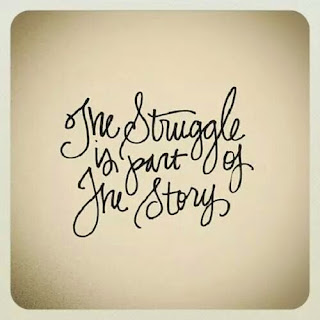Lesson VII: Everyone needs a common sense friend like Han Solo.
At first glance, Solo seems like a reckless gambler, but his appearance in Episode VII solidifies his heroic status. Harrison Ford’s character was introduced in Star Wars in 1977. He and his furry pal Chewbacca accepted a request to transport Luke Skywalker, Obi-Wan Kenobi, C-3PO and R2-D2 on his ship, the Millennium Falcon. Eventually, the common sense guy was swept up in a plot to save the galaxy from evil. He fell in love with Princess Leia Organa on board The Millennium Falcon, and declined a reward in order to rescue their friends. He didn’t just fall in love with Princess Leia, he fell in love with the idea that good can overcome all evil circumstances. Han possessed something that the powerful Jedi force did not, a connection with the ruffians of the galaxy. Despite his fate, Han Solo’s friendship can be summed up by the essences that he's the lovable cowboy kind of friend that everyone needs.
Lesson VI: One must learn to walk that thin line between love and hate.
This will make perfect sense for those who followed the love story of young Anakin Skywalker (aka Darth Vader) and Queen Padmé Amidala. At the risk of losing his Jedi status, Anakin married Padmé on her planet of Naboo. The marriage remained a secret, as Skywalker would have been expelled from the Jedi Order. Ultimately, his marriage to Amidala is blamed for his fall to the dark side of The Force. While watching his wife die during childbirth, the evil Darth Sidious was able to seduce Anakin to the dark side with the pretense of saving her life. The Jedi Knights emphasize teaching the control of one’s emotions to those in power, and Anakin Skywalker is a prime example why this lesson is important.
Lesson V: Be careful who you vote for.
As a pacifist, Queen Padme’ rallied the Senate to vote for new leadership; a vote that ultimately led to the rise of Darth Lords. In the midst of her planet being bombed, Queen Padme’ said it best “Wake up, Senators…you must wake up! If we offer the separatists violence, they can only show us violence in return! Many will lose their lives. All will lose their freedom. This decision could very well destroy the very foundation of our great Republic. I pray you, do not let fear push you into a disastrous decision. Vote down this security measure, which is nothing less than a declaration of war! Does anyone here want that? I cannot believe they do.” She would later learn that indeed some politicians would profit from war, especially her colleague and confidant who goes publicly by Supreme Chancellor Palpatine but is actually Darth Sidious.
Lesson IV: It’s impossible to see the future so trust your instincts.
In episode I, II and III, the Jedi council could sense that there was a disturbing element in training Anakin Skywalker. Throughout the films they expressed a sense of concern but ultimately even the wise Yoda defied his instincts with words such as this, “Impossible to see, the future is." They moved forward with training the being that would become Darth Vader, who in turn set out to murder all Jedi Knights.
Lesson III: In the powerful words of Jedi Obi-Wan Kenobi, “Strike me down, and I will become more powerful than you could possibly imagine.”
As we approach the Dr. Martin Luther King Jr. holiday, we have a real life example of how legends can impact policy and change. That lesson needs very little explanation.
Lesson II: The language of love and loyalty are both universal.
We see this demonstrated in Star Wars from the squeals of the stumpy R2-D2. Although he speaks in droid throughout the films, his sentiments are clearly understood. And then there is the huggable Wookiee warrior, Chewbacca, who continues to help humans restore freedom to the galaxy in past and present trilogies. Han Solo's fuzzy side-kick only speaks Wookie (which sounds like a series of groans, grunts, and growls) but is armed with a big heart and an unwavering loyalty that translates easily; reminding us that the social construction of language is not the only form of communication.
Lesson I: “Do or Do Not, There is No Try.”
This, one of the most well-known slogans in the film series, made its debut in The Empire Strikes Back as young Luke Skywalker is training to use the Force. When Master Yoda instructed him to lift his ship out of the water, Luke doubted his strength, saying that a whole ship was different than a rock, but Yoda insisted that the difference was only in his mind. When Luke said, "Okay, I'll try," Yoda responded, "No. Try not. Do or do not. There is no try."
This year you could look to Star Wars for inspiration and approach your goals with
a Jedi-syle mindset.
Peace, love and may the Force be strong with you in 2016!






















